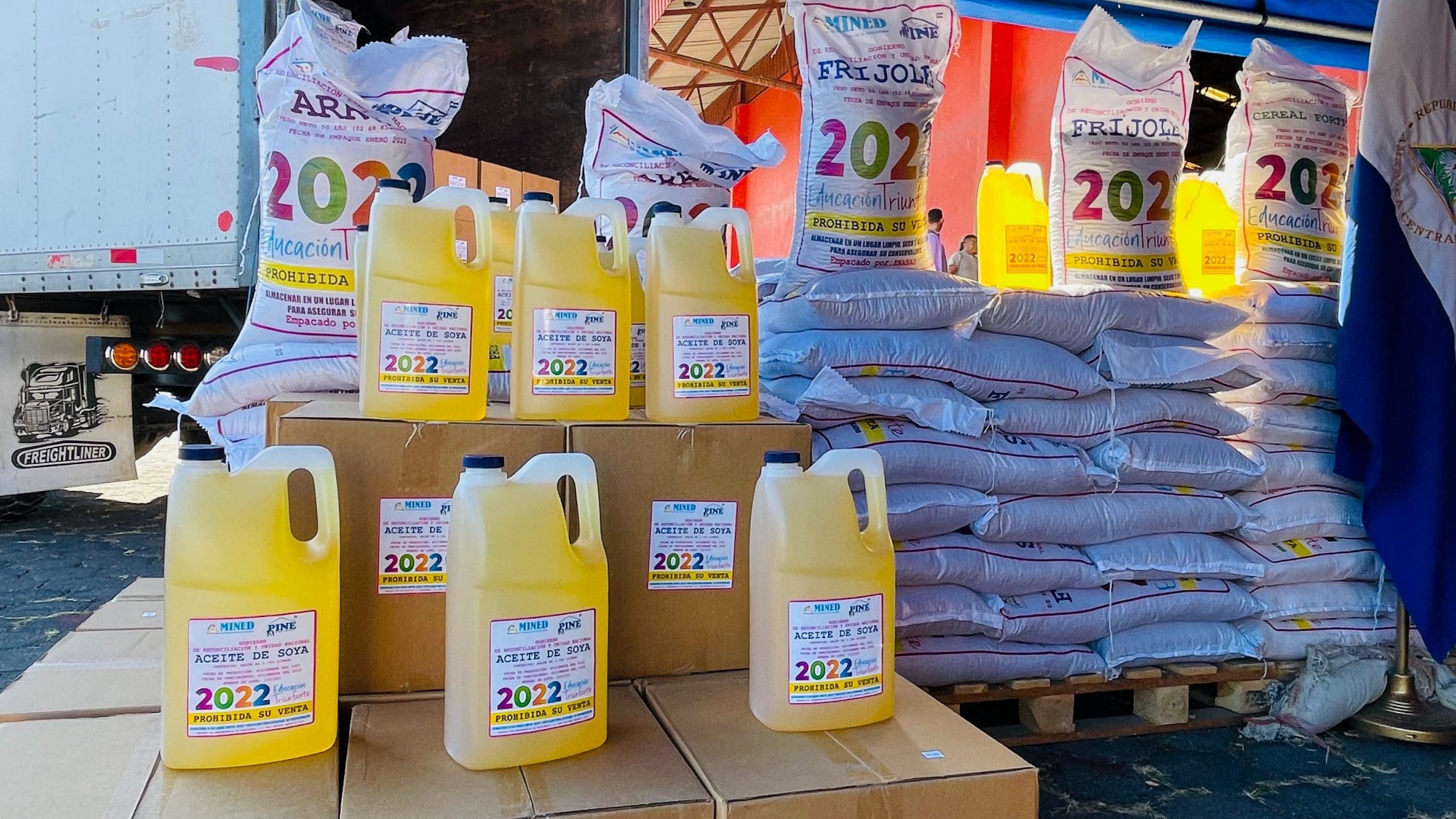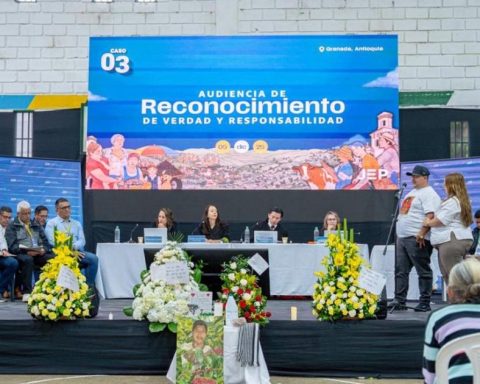Twice a month, “Josefa”, 36, prepares the school snack for the sections of her two children who attend primary school in Managua. The mother receives the package sent to the schools by the Ministry of Education (Mined), which includes between one to three pounds of rice, beans and corn, two to four pounds of cereal and a quarter of oil, with which she must prepare his house the snack for sections of 15 to 30 students, and take them to school. But preparing the snack “is getting more and more expensive,” she says, because she has to figure out how to make food with basic ingredients, adding accessories that rise in price every month.
The Mined’s School Snack program consists of offering a meal to schoolchildren, especially in schools with limited resources, where many children arrive at school with an empty stomach or just a little coffee. To organize the snack, the Mined delivers packages of raw food, which families must prepare at home and take to school on the corresponding day. Each section of the school organizes the roles for the families, who must assume the “complements” of the snack, including the preparation costs.
“They (the school and the Mined) tell us to take on the cooking and the complement, which is not much, but for people like me that is enough,” says “Josefa.”
“All the food is more expensive and no matter how humble what is eaten, it costs a lot,” he says. The mother details that the beans must spend four hours in the fire and in this “more than 40 pesos can be spent on firewood.” In addition, she must add onion and chiltoma to the rice and beans; sugar for the cereal, and “the 30 pesos for the tortillas, because if you start nesting that corn they give you, it comes out worse, because of the expense in firewood and a mill,” she explains. These costs, which are around 250 cordobas, also rise depending on the number of students and if the family opts for other supplements, because students are not always enthusiastic about eating the same thing.
Those 500 cordobas that she spends on the two monthly snacks are a significant subtraction for “Josefa’s” pocket. The mother makes a living sewing baskets in the Mercado Mayoreo and earns less than 4,000 córdobas a month. She confesses that every time she has to cook the school snack she has to “take credit on the sale”.
The cost of 500 córdobas that she must invest for the two snacks for her children’s sections is equivalent to one eighth of her monthly income, with which she also pays for her family’s food, basic services, transportation and other expenses.
Reduce quantities of the package for the school snack
At the first snack that “Josefa” prepared, at the end of January, she noticed that the quantities in the package had been reduced. They are “giving little and it doesn’t fit, because for fifteen children, who are in my son’s section, they only gave us one pound of each product,” she details.
In January, the Mined delivered the first packages of 2022, transferring 196,151 quintals of food to educational centers throughout the country, to “cover 60 days of class between January and May.” The snacks are delivered in public schools that provide initial, special, primary, normal education and distance modalities in the countryside.
According to the Mined website, the Comprehensive School Nutrition Program (PINE) contemplates the delivery of the raw food package and the development of school gardens, which complement the school snack with vegetables, spices and fruits. However, families report that not all educational centers have a garden and, in those that do exist, they are often “abandoned”.
“Luis”, an expert on education issues from the Teachers’ Union Unit (USM) told CONFIDENTIAL that the snack is positive, because it seeks to reduce school desertion. However, it warns that “improvements are urgently needed” that minimize spending “time and money” for families who, due to lack of resources and costs, must make sacrifices in their economy or choose not to participate in the program because they cannot cover costs.
Parents stop participating in the elaboration
“Julia”, 33 years old, is the mother of two schoolchildren aged five and nine, who in 2022 will not participate in the preparation of the school snack, because she affirms that last year she assumed “many expenses” for doing so.
“He played me up to four times a month, twice for each of the children, and he spent about 200 córdobas each time he played me, because it meant paying 50 córdobas to the mother who was going to cook it, replenish gas or firewood, because I I can’t do it because of work, and give for the complement, which can be cream, cheese or spaghetti, because in my case I don’t adjust to give meat or chicken to between 20 and 30 children, “he details.
“Julia” is a single mother and works as a domestic helper. Her monthly income is less than 6,000 cordobas and she assures that she it is “cheaper to adjust my children’s food at home, because there are only two, than four times a month to assume the snack of up to 30 children”.
“If we add up, it’s up to 800 pesos a month and one is not here to afford those luxuries,” he reflects.
Fewer children participate because “they eat the same”
The fewer families participate in the preparation of the snack, due to lack of time or money, The number of children who do not eat food also increases because it does not encourage them to eat the same thing every day, say teachers from the Teachers’ Union Unit who spoke with CONFIDENTIAL.
“Children are not enthusiastic about eating only rice and beans as a school snack and constantly improving with the economic situation is impossible for parents,” explains “Juan”, another expert on education at USM.
“Catalina”, a teacher and member of the USM, has also seen that “not all the children are eating that snack”, and mentions that in a classroom of 30 or 40 students, only a maximum of 12 are eating it.
“Juan” suggests that the school snack “is accompanied by a small budget for the purchase of dairy products, meat or some vegetables, which makes children feel attracted to eating at school and that cost is subtracted from parents. family”.
He mentions that another option, although more expensive, would be to organize school cafeterias with personnel paid by the Mined. Also that each family, according to their budgets, prepare their children “the piece of cheese, the little bit of cream, the piece of chicken, or whatever they have to pack them” and complement the rest of the snack.
















